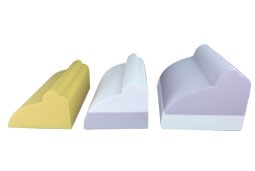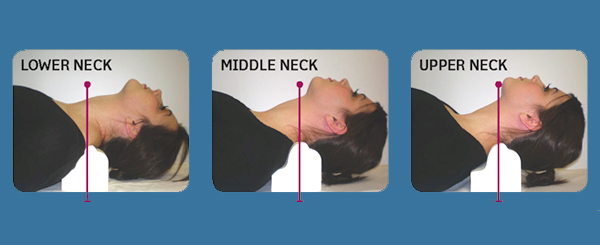|
|
|
Correct cervical lordosis (figure 5 below), as defined by numerous research studies, has been shown to prevent nerve, ligament, and muscle damage, relieve pain, and improve overall health. Car accidents, falls, and poor posture all contribute to abnormal Cervical Lordosis (Figures 1-4 below), putting a patient at greater risk of adverse nerve, ligament, and muscle function. Ultimately, abnormal Cervical Lordosis may lead to a number of health-related disorders. Denneroll, as proven in numerous clinical cases and a randomized clinical trial, has been shown to correct abnormal lordosis of the cervical spine. The Cervical Denneroll products are used worldwide by over 2500 Chiropractors from North America and Australia to the UK, Europe, Asia, and several other international locations. So, for any chiropractic professional, it’s an easy connection to make. And, thanks to Denneroll, it’s an easy correction to make. The Cervical Denneroll Orthotic Device is a simple, yet complex, pillow-like device engineered with curves, angles, and ridges extrapolated from the CBP evidence based cervical spinal model. With simple training and education, you can instruct your patients to properly position the Cervical Denneroll device for low-stress, comfortable mirror-image® traction (spinal remodeling) treatments at home. |
|
 |
Three Sizes for Unmatched VersatilityCurrently, the Denneroll is available in three sizes—for tall or flexible adults (gray Denneroll), average or stiffer adults (white Denneroll), and small adults or pediatric patients (gold Denneroll)—the Denneroll Cervical Orthotic Device is an important addition to your patient-care inventory. Its suggested retail price is affordable for patients too. Note: The blue device depicted in some of the photos below was a sample production used for the purposes of demonstration of setups only! |
Three General Regions of Denneroll PlacementThere are three areas of the neck appropriate for DENNEROLL application. Your Health Care Provider will determine which is right for you. You must follow their determination exactly for best results and to ensure safe use. The DENNEROLL device should only be used on a firm surface such as the floor, or a bench.
|
 |
|
Lower Neck / Upper Thoracic (C7-T2) |
|
Mid Neck (C4-C6) Figure Mid Cervical Placement |
|
Upper Neck Region (C2-C4) |
Denneroll Stress X-raysOftentimes, it is helpful to the clinician to have the patient lie on the denneroll while obtaining an x-ray of the patient’s cervical spine. This is termed the ‘denneroll stress x-ray’. The spine segments (3 vertebra usually) immediately above the denneroll peak will show localized end range of extension motion. The stress x-rays help in determining if the denneroll has been placed in the proper location of the cervical spine. Also the stress x-ray helps to understand if the dennerol will be an effective tool at improving the cervical lordosis by itself or if more advanced types of extension traction are needed in conjunction with the Denneroll. When lying on the Denneroll, it is best to keep your legs flat for the most effect on the cervical spine. The exact protocol based on Denneroll application for posture is detailed below under section below. |
Choosing the size of the Denneroll for the specific patient – Small, Medium or LargeThe size of the Denneroll should be based on a combination several variables:Patient Height
Patient FlexibilityPatient flexibility plays a role in selecting the height of the cervical denneroll. As a general rule, the more flexible the patient, the taller the denneroll should be. Conversely, the more rigid or stiff a patient’s neck is, the smaller (shorter) should be utilized. Also, the first time a patient uses the denneroll, they should be provided with the small denneroll to ensure that they are ‘tolerance tested’ for extension of the neck over the device. Patient PostureBased on the patient’s sagittal plane posture, different denneroll sizes may be used to create more or less anterior or posterior head translation and displacement of the cervical spine itself.
Conversely, if the patient’s head firmly touches the floor on the small Denneroll size but the patient has an increase in pain, the patient should be kept on the small size until the pain response improves over several sessions (5-10 Denneroll sessions is often required before pain subsides).
|